We put the Google Pixel 8 Pro through our rigorous DXOMARK Camera test suite to measure its performance in photo, video, and zoom quality from an end-user perspective. This article breaks down how the device fared in a variety of tests and several common use cases and is intended to highlight the most important results of our testing with an extract of the captured data.
Overview
Key camera specifications:
- Primary: 50MP 1/1.31″ sensor, 1.2μm pixels, f/1.68-aperture lens, OctaPD, OIS,
- Ultra-wide: 48MP sensor, 0.8µm pixels, f/1.95-aperture lens, Quad PDAF
- Tele: 48MP sensor, 0.7µm pixels, f/2.8-aperture lens, Quad PD
- Multi-zone LDAF sensor
Scoring
Sub-scores and attributes included in the calculations of the global score.
Google Pixel 8 Pro


Use cases & Conditions
Use case scores indicate the product performance in specific situations. They are not included in the overall score calculations.
Outdoor
Photos & videos shot in bright light conditions (≥1000 lux)
Indoor
Photos & videos shot in good lighting conditions (≥100lux)
Lowlight
Photos & videos shot in low lighting conditions (<100 lux)
Friends & Family
Portrait and group photo & videos
Pros
- Pleasant colors across all light conditions, in both photo and video
- Nice and accurate skin tones in all light conditions
- Fast and accurate autofocus in both photo and video
- Generally accurate subject exposure for video and photo
- Good detail across all zoom settings and on macro images
- Effective stabilization in most light conditions
The Google Pixel 8 Pro achieved a position among the best in the DXOMARK Camera ranking, thanks to a consistently high performance across all test categories. It delivered the overall best results in bright light, making it the best option for daylight photography and videography.
The zoom performance was well-balanced and consistent as well. Thanks to significant hardware upgrades and improved tuning on the ultra-wide camera module, the Pixel 8 Pro achieved a top score in the wide category. Images captured with the ultra-wide module maintained high levels of image quality down to low light, with a very good texture/noise trade-off. In addition, the Pixel captured excellent macro images, thanks to automatically switching to the ultra-wide at very close subject distances, like most devices in the Ultra Premium segment. While all camera modules on the Pixel 8 Pro benefit from improved light-collection capabilities, with a new 48MP 1/1.73″ image sensor, the jump from the Pixel 7 Pro (12MP 1/2.86″) was most noticeable on the ultra-wide, making it the most capable ultra-wide we have tested to date. Tele zoom results from close to medium were good as well.
Please note that while photos were captured in Ultra HDR, our evaluations were run using an SDR visualization workflow. This is due to the fact that Ultra HDR is a very new Android format, and we are still investigating the most appropriate HDR visualization tools to enable fair in depth comparison. Because viewing HDR content depends on so many factors, such as the viewer’s screen and the application used, the photos displayed in this review are shown in SDR, meaning they do not have the HDR gain map applied. Even viewers with HDR screens will only be able to see SDR versions of the photos.
The 8 Pro’s video HDR mode provided excellent footage, with noticeable better results than the SDR mode in terms of exposure and color. Our testers also liked the good exposure, nice colors and effective stabilization in video mode.
The Google Pixel 8 Pro also comes with several interesting AI-powered post-processing features that are not covered by our current Camera test protocol. Magic Eraser allows for the easy removal of unwanted objects or people in an image. Face Unblur does what it says, and Best Take provides the option to select faces with the best expression in portraits and group shots. In addition, there is a cloud-based video post processing option. Recorded video clips are uploaded to the cloud, and then available as a processed version on your device a couple of hours or so later.
Given the Apple iPhone 15 Pro Max, which was released recently, achieved a slightly higher score than the Pixel 8 Pro in our Camera tests, it makes sense to compare the two devices more closely. In terms of still images, both cameras capture great image quality that will satisfy most users. However, the Apple and Google devices have their strengths in different areas. While the Pixel 8 Pro is slightly ahead in terms of depth of field, the iPhone 15 Pro Max is slightly better at exposure and color rendering, especially thanks to the well-balanced new HDR format.
Both cameras feature an HDR video mode. For Google this is a first, so there are still some improvements to make in order to get to the same video quality level as the iPhone. Our testers noticed higher levels of noise, especially in low light. However, this could potentially be mitigated by Google’s cloud processing, which was designed to improve HDR video rendering.
When compared to the current top-ranked device, the Huawei P60 Pro, the Google Pixel 8 Pro lags slightly behind in many photo sub-attributes, except for color, where the Google managed to have a more neutral white balance. The two devices share the top score for the ultra-wide category, though. In video mode, the Pixel 8 Pro showed a slightly better overall performance, thanks to a more accurate autofocus and fewer artifacts.
The Pixel 8 Pro achieves a position among the top three in our Friends & Family ranking, thanks to very good results in both photo and video. The camera delivered impressive skin-tone accuracy across all light conditions and good fine detail, especially in bright light. In addition, the Google Pixel 8 Pro was capable of capturing images without any delay, exactly when the shutter button was pressed. Moving subjects were captured nicely, with only minimal motion blur and sharp focus.
The Google Pixel 8 Pro’s low-light score puts it among the best devices in this category. The camera captured nice pictures in low light, with accurate exposure and natural rendering of the scene. Noise was managed well, but in some shots, our testers noticed a higher loss of fine detail than on some competitors. Low-light video quality was overall good as well, thanks to good exposure and decent detail. On the downside, strong noise was often visible and color rendering was slightly inaccurate, putting the Google behind the best competitors like the iPhone 15 Pro Max and Huawei P60 Pro in the low-light ranking.
Test summary
About DXOMARK Camera tests: DXOMARK’s Camera evaluations take place in laboratories and in real-world situations using a wide variety of subjects. The scores rely on objective tests for which the results are calculated directly by measurement software on our laboratory setups, and on perceptual tests in which a sophisticated set of metrics allow a panel of image experts to compare aspects of image quality that require human judgment. Testing a smartphone involves a team of engineers and technicians for about a week. Photo, Zoom, and Video quality are scored separately and then combined into an Overall score for comparison among the cameras in different devices. For more information about the DXOMARK Camera protocol, click here. More details on smartphone camera scores are available here. The following section gathers key elements of DXOMARK’s exhaustive tests and analyses. Full performance evaluations are available upon request. Please contact us on how to receive a full report.
Photo
Google Pixel 8 Pro
169
For scoring and analysis, DXOMARK engineers capture and evaluate more than 2,600 test images both in controlled lab environments and in outdoor, indoor and low-light natural scenes, using the camera’s default settings. The photo protocol is designed to take into account the main use cases and is based on typical shooting scenarios, such as portraits, family, and landscape photography. The evaluation is performed by visually inspecting images against a reference of natural scenes, and by running objective measurements on images of charts captured in the lab under different lighting conditions from 1 to 1,000+ lux and color temperatures from 2,300K to 6,500K.
The Google Pixel 8 Pro delivered a good photo performance across all test attributes. Target exposure was generally accurate, despite some occasional slight underexposure of the subject. Color was accurate and pleasant, especially the skin tones. The camera also did a good job at freezing motion, thanks to a fast autofocus and zero shutter lag. The texture/noise trade-off was quite good, with good detail and well-controlled noise across all light conditions. In addition, images were almost free of unwanted image artifacts.
Please note: For Google Pixel 8 Pro photos, we evaluated SDR files on a SDR display. The comparison photos from the Apple iPhone 15 Pro Max were evaluated using HDR files on an HDR display. HEIC files from the Apple device cannot be displayed on this page, so we are using converted SDR files, which are not showing the iPhone’s full potential.
Close-Up
Close-up is the third use case score introduced with DXOMARK Camera version 5. It evaluates the camera’s ability to capture detail at subject distances below 10cm and magnifications as close to 1:1.
The Pixel 8 Pro did very well in our close-up photography test, thanks to automatically switching to its ultra-wide camera module when detecting a close subject. Macro images captured by the Pixel 8 Pro had high levels of detail and pleasant colors.

Exposure
Google Pixel 8 Pro
130
Exposure is one of the key attributes for technically good pictures. The main attribute evaluated is the brightness of the main subject through various use cases such as landscape, portrait, or still life. Other factors evaluated are the contrast and the dynamic range, eg. the ability to render visible details in both bright and dark areas of the image. Repeatability is also important because it demonstrates the camera's ability to provide the same rendering when shooting several images of the same scene.
The Google Pixel 8 Pro delivered good subject exposure. The camera usually also captured a wide dynamic range across all light conditions.
Exposure was good, even in very low light, providing a natural rendering of the scene.
In some of our tests scenes, the subject was slightly underexposed when compared to the competition.

Color
Google Pixel 8 Pro
130
Color is one of the key attributes for technically good pictures. The image quality attributes analyzed are skin-tone rendering, white balance, color shading, and repeatability. For color and skin tone rendering, we penalize unnatural colors but we respect a manufacturer's choice of color signature.
The Pixel 8 Pro managed to capture images with very nice colors, thanks to a neutral white balance and accurate color rendering under all light conditions.
Skin tones were especially nice and looked very natural for all types of skin tones.
Under typical indoor lighting, white balance was neutral, providing a more accurate rendering than the Huawei P60 Pro, which sometimes produced a yellow cast.
The Pixel 8 Pro’s neutral white balance provided accurate color rendering but could sometimes look slightly cold.

Autofocus
Google Pixel 8 Pro
125
Autofocus tests concentrate on focus accuracy, focus repeatability, shooting time delay, and depth of field. Shooting delay is the difference between the time the user presses the capture button and the time the image is actually taken. It includes focusing speed and the capability of the device to capture images at the right time, what is called 'zero shutter lag' capability. Even if a shallow depth of field can be pleasant for a single subject portrait or close-up shot, it can also be a problem in some specific conditions such as group portraits; Both situations are tested. Focus accuracy is also evaluated in all the real-life images taken, from infinity to close-up objects and in low light to outdoor conditions.
The Pixel 8 Pro’s autofocus system worked accurately in most test conditions. Performance was good in daylight scenes with moving subjects, as well as in low light. The camera was capable of freezing motion well, avoiding any motion blur on the subject. In this test scene, it also captured the photo in exactly the intended moment, when the subject stepped across the metal grid on the ground.
Thanks to its detail recovery algorithm, the Pixel 8 Pro also managed to simulate a quite wide depth of field in scenes with subjects at different distances from the camera. Depth of field was still lower than on the Huawei P60 Pro that features a variable aperture, but wider than on the Apple iPhone 15 Pro Max.

Texture
Google Pixel 8 Pro
125
Texture tests analyze the level of details and the texture of subjects in the images taken in the lab as well as in real-life scenarios. For natural shots, particular attention is paid to the level of details in the bright and dark areas of the image. Objective measurements are performed on chart images taken in various lighting conditions from 1 to 1000 lux and different kinds of dynamic range conditions. The charts used are the proprietary DXOMARK chart (DMC) and the Dead Leaves chart.
The Google Pixel 8 Pro did a good job at capturing fine detail with natural rendering across all test conditions. The observations of our testers were confirmed by objective measurements in the lab.

In low light, backlit conditions and high-contrast scenes our testers often observed a local loss of fine detail in the frame.

Noise
Google Pixel 8 Pro
117
Noise tests analyze various attributes of noise such as intensity, chromaticity, grain, structure on real-life images as well as images of charts taken in the lab. For natural images, particular attention is paid to the noise on faces, landscapes, but also on dark areas and high dynamic range conditions. Noise on moving objects is also evaluated on natural images. Objective measurements are performed on images of charts taken in various conditions from 1 to 1000 lux and different kinds of dynamic range conditions. The chart used is the Dead Leaves chart and the standardized measurement such as Visual Noise derived from ISO 15739.
Noise was usually well controlled in all light conditions down to low light. In high-contrast scenes, our testers observed occasional noise reduction instabilities, and in low light, some chroma noise could be noticeable, but overall, noise was well controlled on textured areas and subjects.

Artifacts
Google Pixel 8 Pro
82
The artifacts evaluation looks at lens shading, chromatic aberrations, geometrical distortion, edges ringing, halos, ghosting, quantization, unexpected color hue shifts, among others type of possible unnatural effects on photos. The more severe and the more frequent the artifact, the higher the point deduction on the score. The main artifacts observed and corresponding point loss are listed below.
Like on the predecessor Pixel 7 Pro, unwanted artifacts were well under control on the Google Pixel 8 Pro, including flare and ringing, which often make an appearance on competing devices. However, slight fusion artifacts could sometimes be seen around the subject in high-contrast scenes.
Bokeh
Google Pixel 8 Pro
85
Bokeh is tested in one dedicated mode, usually portrait or aperture mode, and analyzed by visually inspecting all the images captured in the lab and in natural conditions. The goal is to reproduce portrait photography comparable to one taken with a DLSR and a wide aperture. The main image quality attributes paid attention to are depth estimation, artifacts, blur gradient, and the shape of the bokeh blur spotlights. Portrait image quality attributes (exposure, color, texture) are also taken into account.
Image results in the the Pixel 8 Pro’s bokeh mode were quite good, with high levels of detail on the subject and quite strong blur. However, subject segmentation artifacts were often noticeable on fine detail, for example hair. These artifacts and a lack of foreground blur, which resulted in an unnatural rendering of the scene, meant that the Pixel 8 Pro could not quite match the best in class in terms of bokeh simulation.
The Google Pixel 8 Pro’s switches to a 2x tele zoom when shooting in portrait mode, instead of 1x on the Google Pixel 7 Pro. Thanks to this change, the new model uses a focal length that is more suitable for portrait photography, allows for a more comfortable subject distance and reduces geometric deformations on the subject. However, more segmentation errors were visible compared to the predecessor.
Preview
Google Pixel 8 Pro
93
Preview tests analyze the image quality of the camera app's preview of the image, with particular attention paid to the difference between the capture and the preview, especially regarding dynamic range and the application of the bokeh effect. Also evaluated is the smoothness of the exposure, color and focus adaptation when zooming from the minimal to the maximal zoom factor available. The preview frame rate is measured using the LED Universal Timer.
The Google Pixel 8 Pro provided an accurate preview image in most light conditions. However, in high-contrast scenes, exposure was slightly different to the final capture.
Unlike most of its direct competitors, but like its predecessor, the Pixel 8 Pro did not apply the simulated bokeh effect to its preview image when shooting in portrait mode. You’ll simply have to take a portrait picture and open it in the gallery in order to check the bokeh effect.
Zoom
Google Pixel 8 Pro
169
DXOMARK engineers capture and evaluate over 400 test images in controlled lab environments and in outdoor, indoor, and low-light natural scenes, using the camera’s default settings and pinch zoom at various zoom factors from ultra wide to very long-range zoom. The evaluation is performed by visually inspecting the images against a reference of natural scenes, and by running objective measurements of chart mages captured in the lab under different conditions from 20 to 1000 lux and color temperatures from 2300K to 6500K.
Zoom was already a strength of the Pixel 7 Pro, and the Pixel 8 Pro follows in the footsteps of its predecessor, delivering consistently good image quality from ultra-wide to medium range tele, across all light conditions. Compared to the Pixel 7 Pro, the 8 Pro comes with a better light collection capacity, thanks to a bigger sensor and faster aperture on the ultra-wide camera module, as well as a faster aperture on the tele camera. Thanks to the larger sensor and faster aperture in the ultra-wide camera, the texture/noise trade-off was significantly improved over the Pixel 7 Pro, and the camera generally managed good results in all light conditions. In addition, tele zoom results were good from close to medium range, outperforming some competitors in this respect.
Video Zoom
In terms of video zoom, our testers observed noticeable improvements over the Pixel 7 Pro, especially for noise. However, some competitors, such as the Apple iPhone 15 Pro Max, offer better results at ultra-wide and 2x tele, as well as smoother transitions between camera modules.

Wide
Google Pixel 8 Pro
122
These tests analyze the performance of the ultra-wide camera at several focal lengths from 12 mm to 20 mm. All image quality attributes are evaluated, with particular attention paid to such artifacts as chromatic aberrations, lens softness, and distortion. Pictures below are an extract of tested scenes.
Ultra-wide performance is one of the Pixel 8 Pro’s strengths, with the device achieving the current top score in this category. The camera captured images with good detail and low noise across all light conditions.

Tele
Google Pixel 8 Pro
128
All image quality attributes are evaluated at focal lengths from approximately 40 mm to 300 mm, with particular attention paid to texture and detail. The score is derived from a number of objective measurements in the lab and perceptual analysis of real-life images.
Tele zoom performance was good and consistent in our close and medium range tests. The Pixel 8 Pro achieves good performances with nice continuity on our close and medium range tests (50 to 160mm equivalent focal length).
When zooming in slightly more to around 60mm, improvements in terms of detail were noticeable, especially at the center of the frame.
The level of detail remained high until (and slightly above) 5x tele zoom level, but then decreased at long range settings (160-200mm).
Video
Google Pixel 8 Pro
159
DXOMARK engineers capture and evaluate more than 2.5 hours of video in controlled lab environments and in natural low-light, indoor and outdoor scenes, using the camera’s default settings. The evaluation consists of visually inspecting natural videos taken in various conditions and running objective measurements on videos of charts recorded in the lab under different conditions from 1 to 1000+ lux and color temperatures from 2,300K to 6,500K.
In video mode, the Pixel 8 Pro achieved a spot among the best in our video ranking, thanks to a very good HDR mode. Overall, the Pixel 8 Pro showed a nice improvement over its predecessor and is the best Android device we have tested to date. Still, it could not quite keep up with the iPhone 15 Pro Max, which maintains the top spot in the ranking. Our experts tested the Pixel 8 Pro video with both SDR and HDR settings and concluded that HDR mode provided the overall higher level of video quality.
Please note that we did not test Video Boost mode as this cloud-processing feature is not covered by our video test protocol. Also note that a compatible HDR display is required to see the full potential of the HDR rendering and that YouTube only displays the original HDR rendering if videos are watched on a compatible HDR screen. Otherwise, a compressed SDR video is displayed, and even that is not always rendered properly on the platform.
Video samples were recorded with the HDR mode activated and a 4K resolution and 30fps frame rate.

Exposure
Google Pixel 8 Pro
116
Exposure tests evaluate the brightness of the main subject and the dynamic range, eg. the ability to render visible details in both bright and dark areas of the image. Stability and temporal adaption of the exposure are also analyzed.
Like its predecessor the Pixel 7 Pro, the 8 Pro was capable of capturing a wide dynamic range, as well as an accurate and stable video exposure. In addition, the new model offered increased contrast with HDR mode activated. Noticeable stepping and some instabilities during exposure transitions meant the Pixel could not quite match the best in class, the iPhone 15 Pro Max, especially when recording in low light.

Color
Google Pixel 8 Pro
120
Image-quality color analysis looks at color rendering, skin-tone rendering, white balance, color shading, stability of the white balance and its adaption when light is changing.
The Pixel 8 Pro provided nice color rendering in video mode, especially in daylight and under indoor conditions. White balance was good as well, with stable and smooth transitions in changing light conditions. Skin tones were generally nice, but our testers observed some inaccuracies when recording backlit scenes.

Autofocus
Google Pixel 8 Pro
120
The Pixel 8 Pro’s video autofocus was fast to react, with smooth transitions between planes, and effective tracking, even in low light.
Overall autofocus performance was very good, but some slight focus inaccuracies on close subjects under indoor conditions prevented the Pixel 8 Pro from achieving the same score as the iPhone 15 Pro Max.

Texture
Google Pixel 8 Pro
118
Texture tests analyze the level of details and texture of the real-life videos as well as the videos of charts recorded in the lab. Natural videos recordings are visually evaluated, with particular attention paid to the level of details in the bright and areas as well as in the dark. Objective measurements are performed of images of charts taken in various conditions from 1 to 1000 lux. The charts used are the DXOMARK chart (DMC) and Dead Leaves chart.
The Google Pixel 8 Pro managed high texture measurements in our lab tests, showing nice improvements over its predecessor, and even outperforming the iPhone 15 Pro Max in terms of DMC metrics. The 8 Pro captured high levels of detail in bright light, but some local loss of detail was occasionally noticeable under some specific conditions, such as backlit scenes with moving subjects.

Noise
Google Pixel 8 Pro
120
Noise tests analyze various attributes of noise such as intensity, chromaticity, grain, structure, temporal aspects on real-life video recording as well as videos of charts taken in the lab. Natural videos are visually evaluated, with particular attention paid to the noise in the dark areas and high dynamic range conditions. Objective measurements are performed on the videos of charts recorded in various conditions from 1 to 1000 lux. The chart used is the DXOMARK visual noise chart.
Noise can be challenging to control with an HDR video format, and it was the Pixel’s main drawback in video mode. Noise could sometimes be noticeable in bright light videos, but it became more noticeable in indoor conditions and was quite intrusive in low light clips.

Stabilization
Google Pixel 8 Pro
119
Stabilization evaluation tests the ability of the device to stabilize footage thanks to software or hardware technologies such as OIS, EIS, or any others means. The evaluation looks at residual motion, smoothness, jello artifacts and residual motion blur on walk and run use cases in various lighting conditions. The video below is an extract from one of the tested scenes.
Video stabilization was effective across all light conditions. However, compared to the best-in-class iPhone 15 Pro Max, stabilization artifacts, such as sharpness differences between frames, were more visible. The iPhone does better in this respect, with the effect pretty much unnoticeable in bright light, thanks to very short exposure times and a 60fps frame rate.

Artifacts
Google Pixel 8 Pro
86
Artifacts are evaluated with MTF and ringing measurements on the SFR chart in the lab as well as frame-rate measurements using the LED Universal Timer. Natural videos are visually evaluated by paying particular attention to artifacts such as aliasing, quantization, blocking, and hue shift, among others. The more severe and the more frequent the artifact, the higher the point deduction from the score. The main artifacts and corresponding point loss are listed below.
Artifacts were quite well under control. However, unlike the iPhone 15 Pro Max, the Pixel 8 Pro was not capable of maintaining 60fps down to low light. The need for very fast exposure times means that such fast frame rates are difficult to achieve in low light.


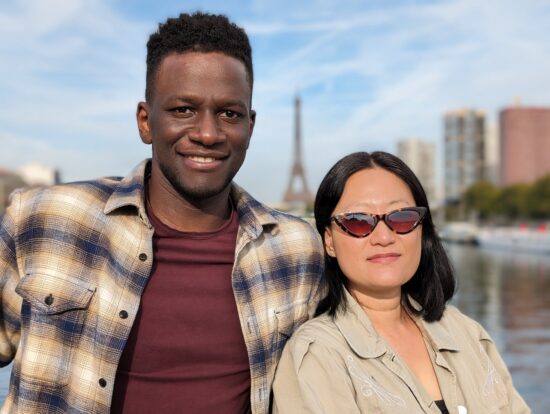






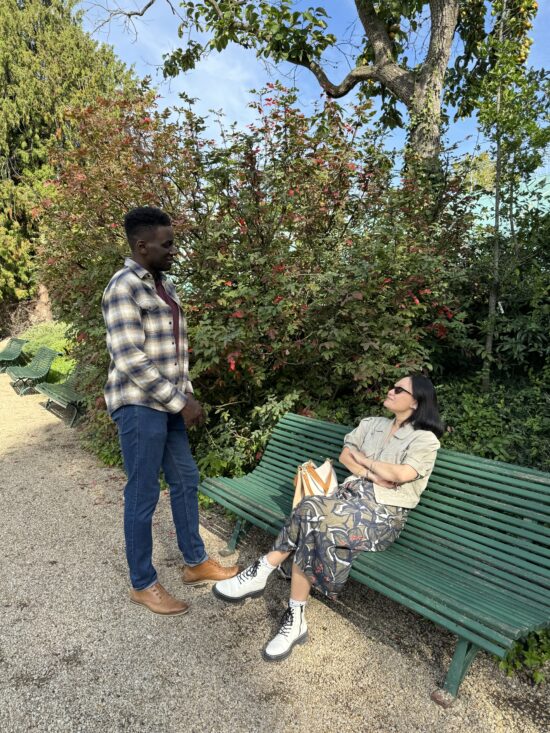

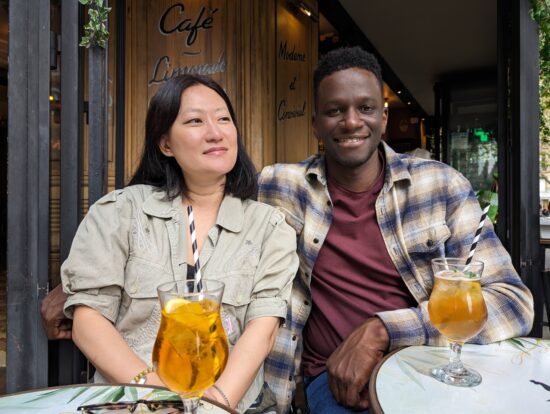
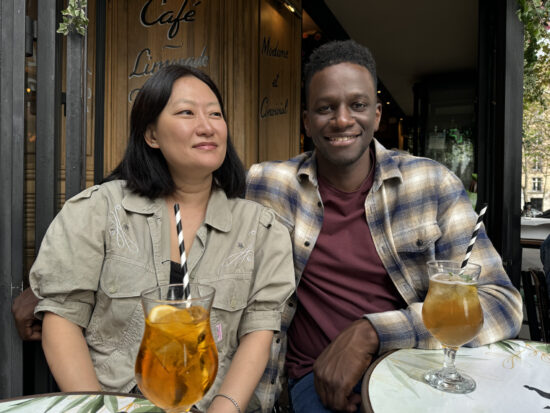
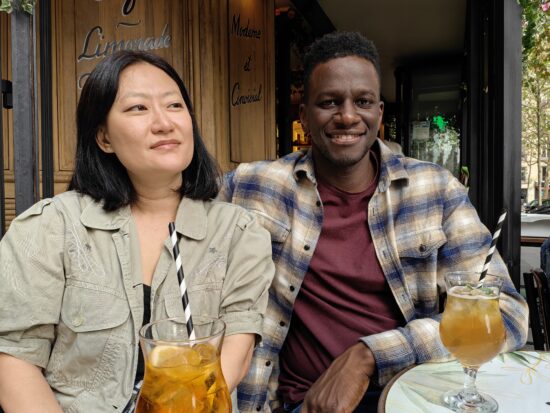
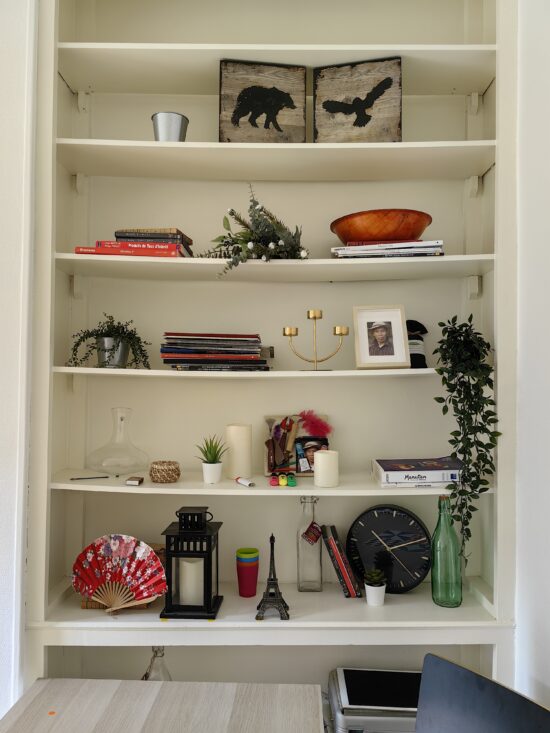
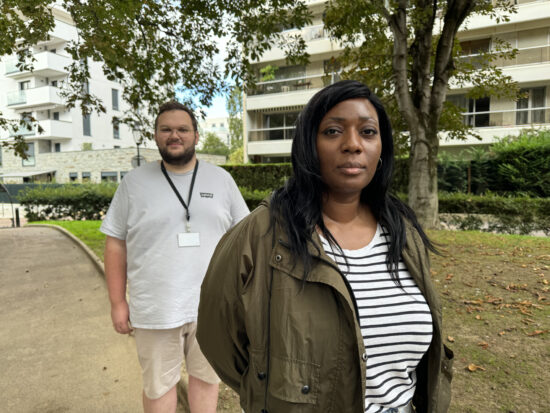
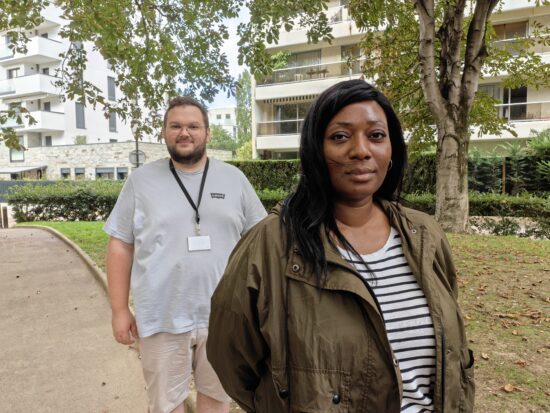
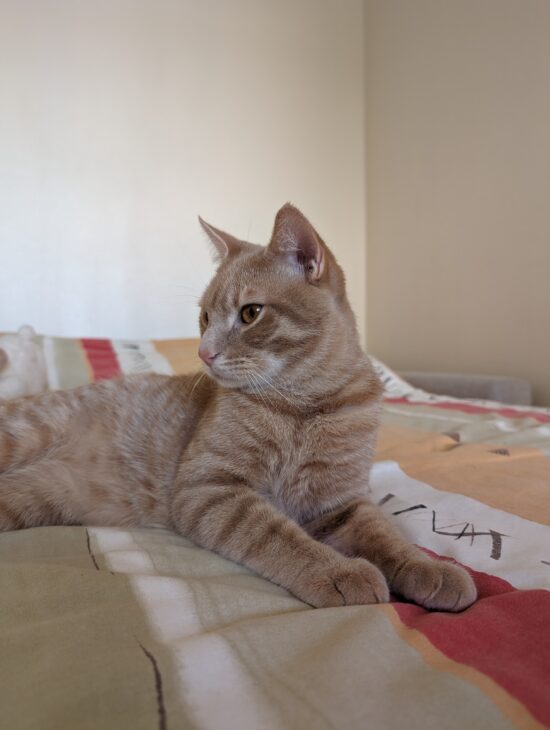

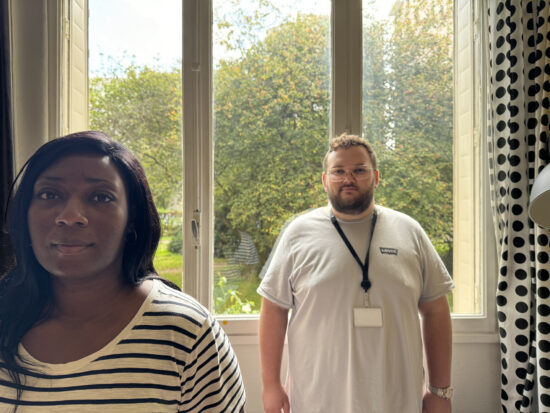
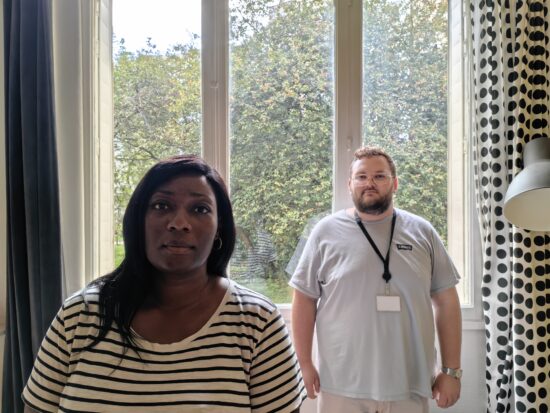
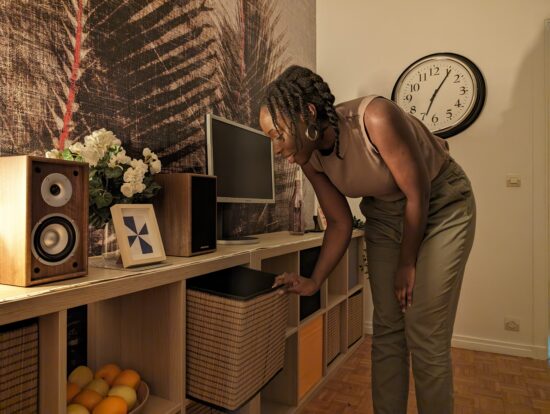
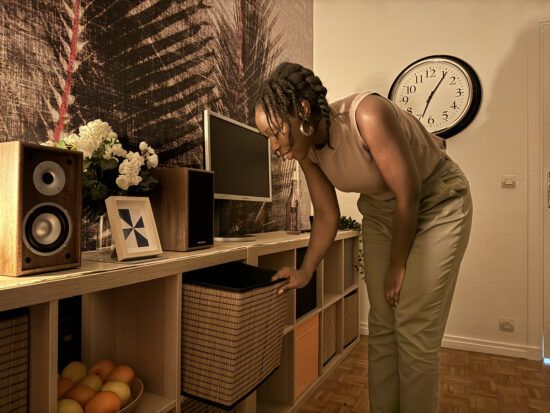
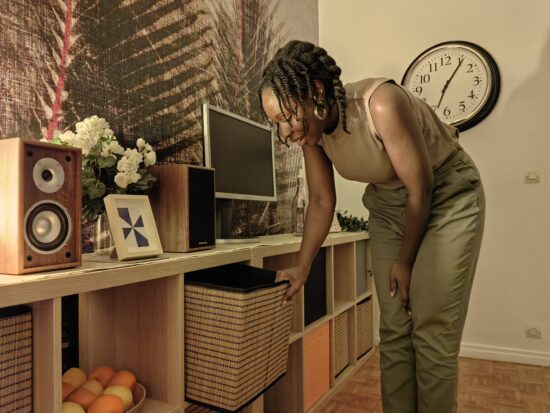
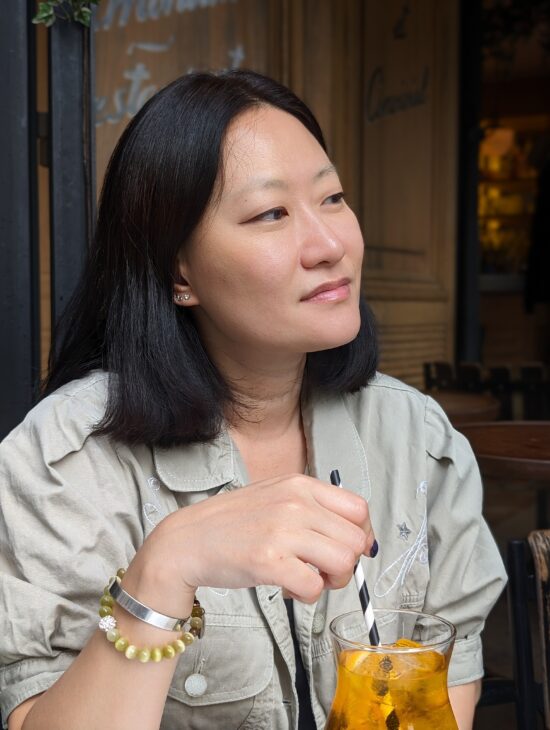
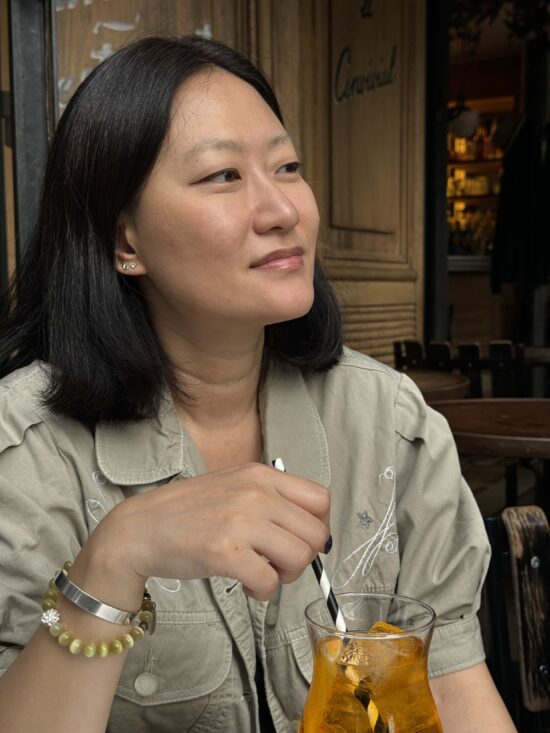
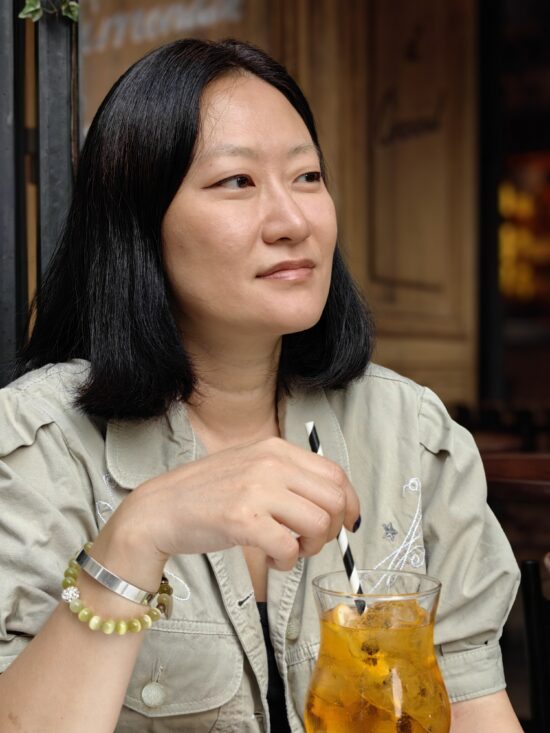
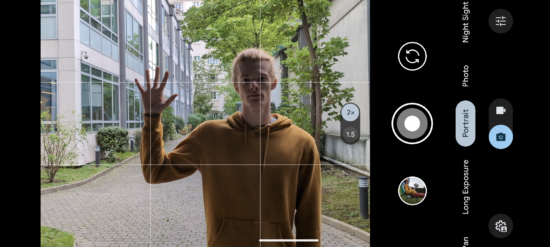
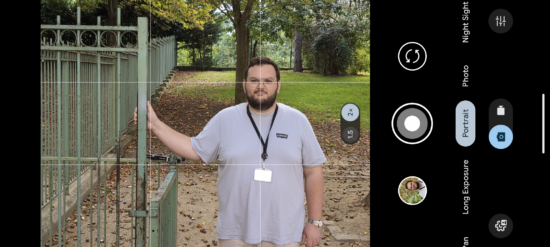


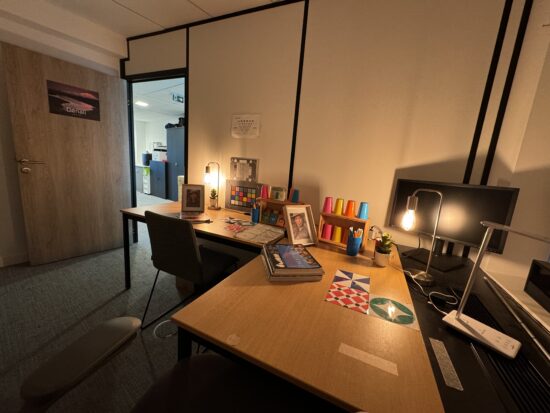
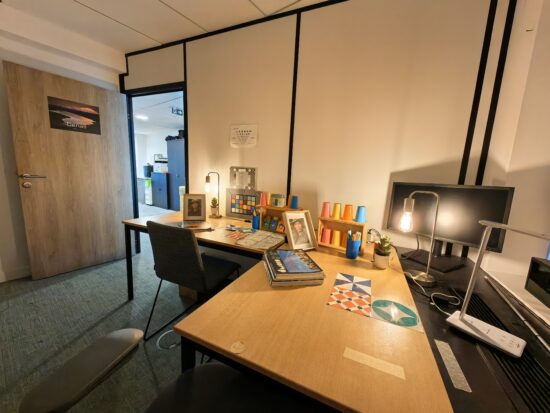


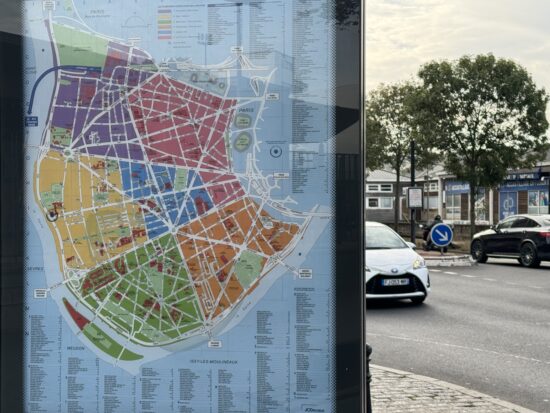
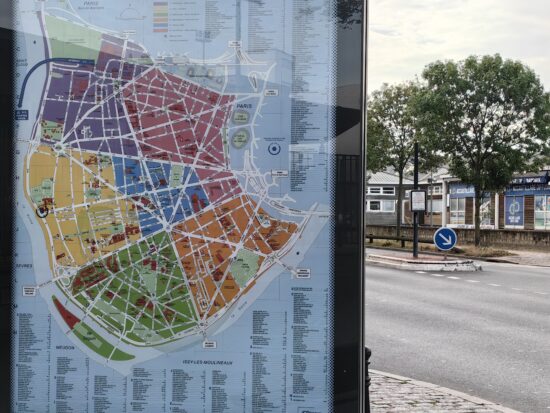


DXOMARK encourages its readers to share comments on the articles. To read or post comments, Disqus cookies are required. Change your Cookies Preferences and read more about our Comment Policy.